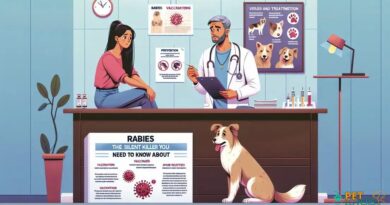What is: Avoiding dog aggression
What is Dog Aggression?
Dog aggression refers to a range of behaviors exhibited by dogs that can lead to aggressive actions towards other animals or humans. Understanding the underlying causes of aggression is crucial for pet owners to manage and mitigate these behaviors effectively. Aggression can stem from fear, territorial instincts, or even pain, making it essential to identify the triggers that lead to such responses.
Recognizing Signs of Aggression
Identifying the early signs of aggression in dogs is vital for prevention. Common indicators include growling, baring teeth, stiff body posture, and intense staring. These behaviors often serve as warnings that a dog may feel threatened or uncomfortable. By recognizing these signs early, owners can take proactive measures to avoid escalation into more serious aggressive actions.
Understanding Triggers of Aggression
Aggression in dogs can be triggered by various factors, including environmental stimuli, social interactions, and past experiences. For instance, a dog may react aggressively if it feels cornered or if it perceives a threat to its territory. Understanding these triggers allows owners to create a safer environment for their pets and reduce the likelihood of aggressive incidents.
Socialization as a Preventive Measure
One of the most effective ways to avoid dog aggression is through proper socialization. Exposing dogs to various people, animals, and environments from a young age helps them develop confidence and reduces fear-based aggression. Socialization should be a gradual process, ensuring that the dog feels comfortable and secure in new situations.
Training Techniques to Mitigate Aggression
Implementing positive reinforcement training techniques can significantly help in managing aggressive behaviors. Rewarding desired behaviors, such as calmness and obedience, encourages dogs to repeat those actions. Training should focus on building a strong bond between the dog and its owner, fostering trust and reducing the likelihood of aggressive responses.
Seeking Professional Help
In cases where aggression is severe or persistent, seeking the help of a professional dog trainer or behaviorist is crucial. These experts can assess the dog’s behavior and provide tailored strategies to address aggression. Professional guidance ensures that owners are equipped with the right tools to manage their dog’s behavior effectively.
Creating a Safe Environment
A safe environment is essential for preventing dog aggression. This includes providing a secure space for the dog to retreat to when feeling overwhelmed and ensuring that interactions with other animals and people are supervised. By managing the dog’s environment, owners can reduce stressors that may trigger aggressive behaviors.
Understanding Body Language
Dogs communicate largely through body language, and understanding these signals can help owners prevent aggressive encounters. Recognizing signs of discomfort, such as tail tucking or avoidance behaviors, allows owners to intervene before aggression escalates. Being attuned to a dog’s body language fosters better communication and strengthens the human-animal bond.
Importance of Regular Exercise
Regular exercise is crucial for a dog’s physical and mental well-being. A well-exercised dog is less likely to exhibit aggressive behaviors due to pent-up energy or frustration. Engaging in daily walks, playtime, and mental stimulation helps to keep dogs balanced and reduces the likelihood of aggression stemming from boredom or excess energy.
Monitoring Health and Well-being
Lastly, monitoring a dog’s health is essential in avoiding aggression. Pain or discomfort from medical issues can lead to irritability and aggressive behavior. Regular veterinary check-ups ensure that any underlying health problems are addressed promptly, contributing to a happier and more stable dog that is less prone to aggression.



